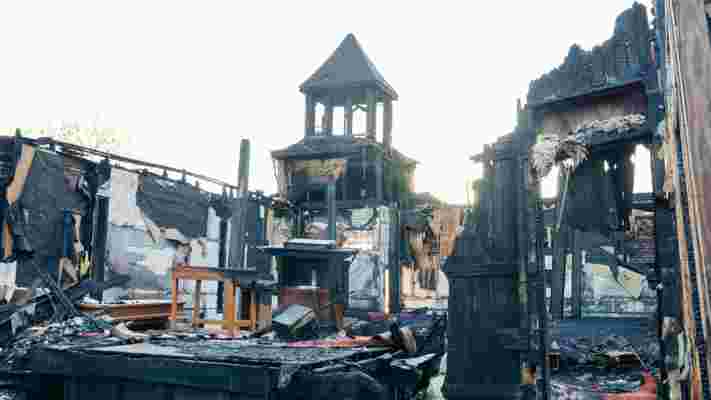Since the Notre-Dame fire last week, nearly $1 billion has been pledged to rebuild the famous cathedral. That outpouring is a tremendous sign of just how beloved the church is worldwide. But the donations also inspired giving to another group of churches—almost $2 million was raised to help rebuild three African American churches that were recently burned down in St. Landry Parish, Louisiana.

When a crowdfunding campaign for the Louisiana churches went viral last Tuesday, it received more than $1.8 million by the end of the week. Before then, it had collected just under $93,000. Funds from the campaign will be exclusively used to rebuild and refurbish the churches, St. Mary Baptist in Port Barre and Greater Union Baptist Church and Mount Pleasant Baptist in Opelousas. The fundraiser was launched by the Seventh District Baptist Association, a 149-year-old nonprofit organization made up of 54 Baptist churches in southwest Louisiana, including the three that were burned.
Unlike the Notre-Dame fire, the St. Landry churches were purposefully set on fire on March 26, April 2, and April 4. Since then, a 21-year-old man, the son of a deputy sheriff, has been charged with arson and hate crimes for the incidents. Also unlike Notre-Dame, these three churches burned down, completely lost to their communities.
While the St. Landry churches were not architecturally renowned throughout the world, in their own communities they were revered as centers of community, worship, spirituality, and decades of family history. That they were reduced to ash is no less tragic than if Notre-Dame itself had been completely destroyed.
“Our houses of worship really relate to a basic human need and impulse—to build a tribute to the transcendent,” says Duncan Stroik, an architect and professor at the University of Notre Dame School of Architecture. When those temples are damaged—whether intentionally or not—“there's a sense that the sacred has been hurt,” adds Stroik, who specializes in designing religious structures. Of course, that was just what the arsonist in Louisiana, like many violent offenders before him, was aiming for.
“[Churches] are a place of worship, but also a place of safety,” says Valerie Cooper, associate professor of Religion and Society and Black Church Studies at Duke University Divinity School. Because churches frequently became multipurpose spaces—where people prayed and mourned, but also talked politics, played, and socialized—in the Jim Crow South, the destruction of such a space is doubly dismaying. “It represents the loss of both a sacred space and a safe space,” says Cooper.
To rebuild St. Landry's churches will require addressing material concerns: walls, pews, air-conditioning, post-Katrina building codes. But they must address immaterial issues, too: the hopes, dreams, and spiritual health of these communities are wrapped up in the physical structures, too. “That building is a resurrection for the communities,” says Cooper.
While the fire at Notre-Dame appears to have been an unfortunate accident, those in St. Landry Parish are a catastrophic failure of human morality (and conceivably American education). Yet both events have shown some remarkable silver linings. As sacred symbols of faith and sanctuary, they deserve to rise again. Famous and ancient or obscure and diminutive, all offer a chance at transcendence, majesty, and grace. “To rebuild is an act of hope and optimism,” echoes Stroik. “It's also a defense against the 'evil' that was done.”
